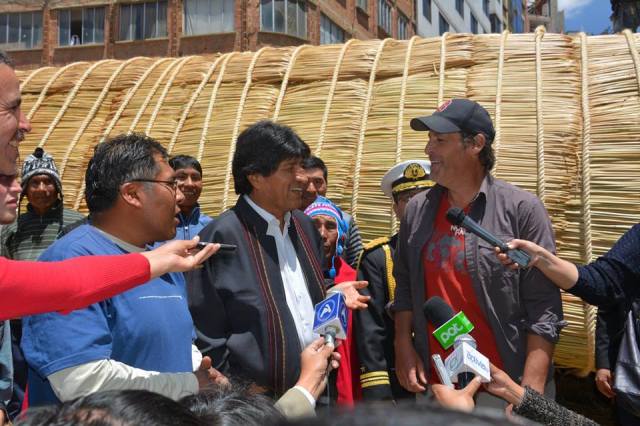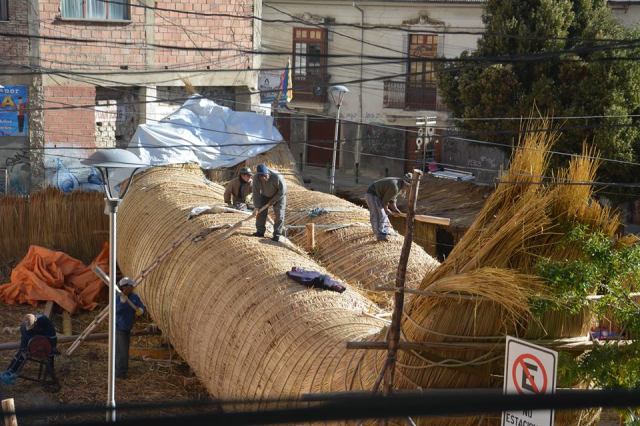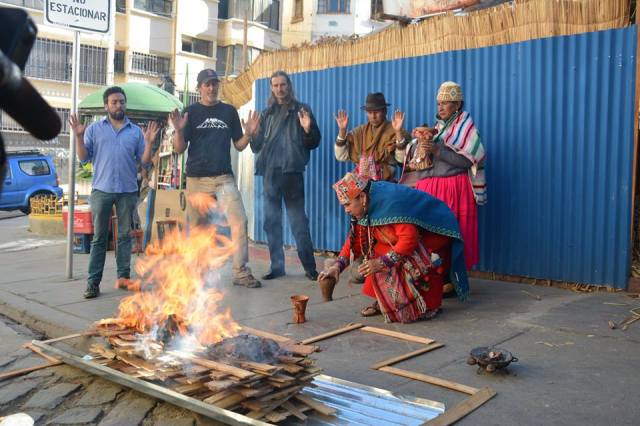Archaeological researches and historians alike have long held the belief that ancient South American civilizations may have sailed across the Pacific to settle in Polynesia and beyond. The continent’s pre-Columbian inhabitants were known for their expert boat crafting skills and nautical prowess despite having limited technology and relying on basic building materials such as balsa wood, rope, and totora reeds. Such theories of early human migration are key to understanding how human life may have spread across the globe.

Virachoca II (the new ship should look similar upon completion). source: Facebook
While it is known that ancient South American civilizations were adapt seafarers, nobody really knows how far their ships might have sailed. Norwegian adventurer, Thor Heyerdahl, was the first to prove that they could have made it as far as Polynesia when he successfully completed a treacherous 8000 km journey from Lima to the Tomuato Islands in a raft made from balsa wood and other native materials – not unlike those thought to have been used thousands of years ago. This monumental achievement gave credibility to early migration theory.
But what does this have to do with Bolivia?
Professional adventurer and US national, Phil Buck, has an even more ambitious plan, to sail a totora reed boat some 18,000 km from Arica (Chile) to Sydney. This is no pipe dream either – the ship, known as Viracocha III, is currently under construction in La Paz.




Buck has had an interesting career in his 29 years as a professional adventurer which began in 1982 when he cycled across the U.S.A. Five years later, he canoed some 8000 k.m. from Washington D.C. to Oregon, following in the footsteps of early explorers Lewis and Clarke and setting the world record for the longest tandem canoe journey ever undertaken. He then went on to become the first person to climb the highest peak of every country in North, South, and Central America. More recently, he’s focused his attention on the sea, with dreams of leading the longest sailing expedition using a primitive raft in documented history.

Buck meeting with El Presidente. source: Facebook
This isn’t his first attempt. Phil and his team successfully sailed a totora reed vessel known as Viracocha I from Arica to Easter Island over 44 days in the year 2000. Their second attempt in 2003 was even more daring. The team planned to sail Virachoca II from Viña del Mar (also in Chile) all the way to Australia but disaster struck early on when a knot used to tow the boat out to sea failed, causing significant damage to the vessel. The crew made it as far as Easter Island in 77 days but were forced to abandon their mission as their craft was too badly damaged from the launch.
“Third time’s the charm”, Phil said in a recent interview with local newspaper Pagina Siete. Viracocha III will set sail in February and, if all goes well, will arrive in Sydney at least six months later.

Working on the hull. source: Facebook
The ship will weigh 20 tonnes upon completion and is being constructed primarily from totora reeds taken from Bolivia’s Lake Titicaca. The best local ship builders from the area have been enlisted to carry out its construction, using traditional methods that date back thousands of years. Once the hull has been completed, the boat will be transported to Arica to finish construction of the upper deck.
This massive project has been made possible through funding from the US and Bolivian governments as well as a local TV station which plans to screen a weekly documentary showing the voyage’s progress from footage uploaded via satellite.
The crew of 10 sailors come from a variety of nations such as America, Chile, Germany, and Bolivia and will take advantage of modern technology including a GPS navigation system, solar panels, satellite phones, a life raft, flares, filming and editing equipment, a modified bicycle to generate electricity, and car batteries to store it. Buck is somewhat reluctant to use these modern devices as he prefers the voyage to be as authentic as possible. However, many of these measures are mandatory safety precautions imposed under international maritime law.

Aymara Prayer to bless the voyage. source: Facebook
The crew will bring some provisions on board but due to the length of the journey and the small size of the boat they will predominately survive off fish caught from the sea and rainwater trapped from the roof. The boat is currently on public display at the Chuquiago Marka convention centre in southern La Paz.

Reblogged this on Die Goldene Landschaft.
LikeLike